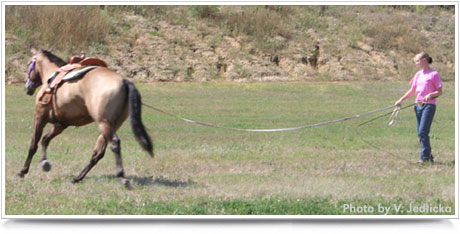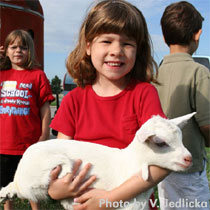Keeping Animals
This section discusses the important issues to consider before choosing animals for your acreage.

Things to Consider:
- Why do you want to raise animals?
- Is the animal you want to raise adaptable to your climate?
- How do zoning laws affect you? (i.e., Does your county limit the number or kind of animals?)
- Do you have a market for what you produce?
- Is there adequate feed available?
- Do you have a way to dispose of manure?
- How many animals will your acreage handle?
- What kind of fences do you have or need?
- Do you have a good supply of water?
- Is there a history of soil-borne or other diseases on your acreage?
- Can you use or remodel existing buildings, or do you need to construct new buildings?
- Do you have the labor and financial resources to begin a livestock enterprise?
Livestock Manure Management: The only effective means of fly control is manure management. Proper disposal of manure is important for animal health, odor control, and good relations with neighbors. Continued application of animal manure to land may cause changes in pH and soil fertility. Zoning regulations may require animal manure to be incorporated during land application. Numerous publications on manure management are available from your local Extension office.
A Good Animal Health Program is Essential:
Your health program should include:
- fresh, clean water
- balanced feed and mineral program
- adequate shelter, lot space and design
- hoof and teeth care
- a good working relationship with your veterinarian and feed suppliers
- a scheduled vaccination program
Animal Welfare and Safety Tips:
- Allow animals to adjust to their new environment
- Understand animal behavior, stay alert
- Don't overcrowd animals, know space requirements
- Provide adequate shelter and water
- Use the proper fence for the livestock and job desired
- Maintain proper nutrition
- Monitor heat and cold stress
- Remember - children are attracted to animals. Safety first!
Do You Have Enough Forage for Your Livestock? In Nebraska, livestock are grazed May through October. Fields with cornstalks and other crop residue are grazed during the winter when there is no snow cover. Hay is fed November through April when crop residues are snow covered.
Forage is what animals consume by grazing. Forages can be cool- or warm-season grasses; legumes such as alfalfa or clover; annual seeded forages like sudan, millet, rape, turnips, triticale and others; and timely pasturing of crops like winter wheat.
Harvested forage is the hay provided to animals when fresh forage is not available. Hay is baled in various sizes: small squares, large squares, round, and various size stacks.
Successful Grazing Principles:
- Check your animals and pastures frequently
- Use rotational grazing practices to improve plant growth, limit parasites and increase stocking rates
- Have water in each pasture or pen
- Do not graze grass areas where soils are water-logged
- Control weeds
- Grazing capacity varies between areas, soil types and plant species
- Leave 2-6 inches of plant material to promote plant health and regrowth
- Allow plants time to recover before regrazing
Source: Adapted for Lancaster County, Nebraska from A Place in the Country: The Acreage Owner's Guide (EC97-2506C).
Warm vs Cool Season Grasses: Warm-season grasses start growth in late spring and continue to grow through the summer. Growth stops in early fall. Cool-season grasses begin growing in early spring and slow or even stop growing in summer, then renew growth in cool months of fall. Both types of grasses are important to pasture managers. Some livestock producers use cool-season grasses like smooth brome or orchard grass for early spring grazing, and then warm-season grasses like bluestems and gramas during the summer, and back to cool-season grasses in the fall. Generally, warm- and cool-season grasses should not be grown together. These grasses are more productive and easier to manage when grown separately.

Fencing: Appropriate fencing is critical in any livestock enterprise. Permanent or temporary fencing can be used effectively. Many low-cost electrical fence options are satisfactory for most interior fencing needs. In areas of high traffic and populations, more durable and permanent fencing such as woven wire, wood, cable, high tensile smooth wire or newer PVC-style fences may be required, especially around the perimeter.
More Acreage Resources & Small Farm Resources